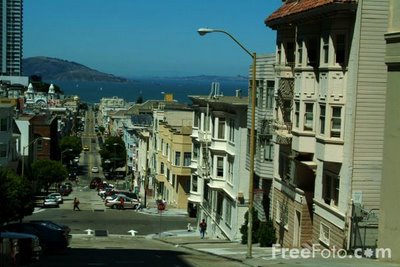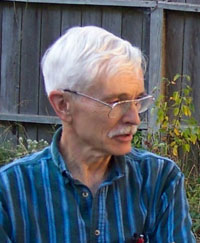The Improbable Place

San Francisco is an unlikely city at best. Pasted in as an afterthought between the a broad bay and the deep blue sea, it may be easy to get to by clipper ship, but not by any other means. You have to go around or over water to get there. The bridges north and east provide what nature meant to deny: easy (if crowded) access to an otherwise isolated place.
Then there are the hills. I went out for a walk this afternoon. The street our family lives on runs flat for a few blocks and then commences to rise. Logically, the flat streets are flatly named: Judah, Lawton, Kirkham. Once they begin to rise, a different ethnic tradition is invoked: Moraga, Noriega, Ortega, Pacheco. From the cross street I was walking on, the side streets fall away like the stock market to one side but rise like taxes on the other.
Who would have thought of paving over this topography? The houses are piled one above another with garages underneath and living quarters above. Stairs lead up to front doors five, ten, fifteen, and even forty steps from the street. Cars are parked with the front tires turned toward the curb so that, if the parking brake slips, the cars will drift back into a nearby house rather than continue falling faster and faster toward the inevitable splash or crash.
In the distance I could see a green hill with a slash of houses running across it half way to the top. They seemed to have their front sides facing the hill while their back ends were hung over space and supported by poles. No doubt the poles are chosen for their earthquake resistant qualities, but that would mean that are resilient and will bend when struck. But who would want to live in earthquake country propped up by flexible poles?
It is, as they say, “a great place to visit,” but could you really live here and expect to wake up in the morning to find you had not imagined it all but that like some insubstantial pageant it had faded, and left no rack behind?
 Christopher L. Webber
Christopher L. Webber